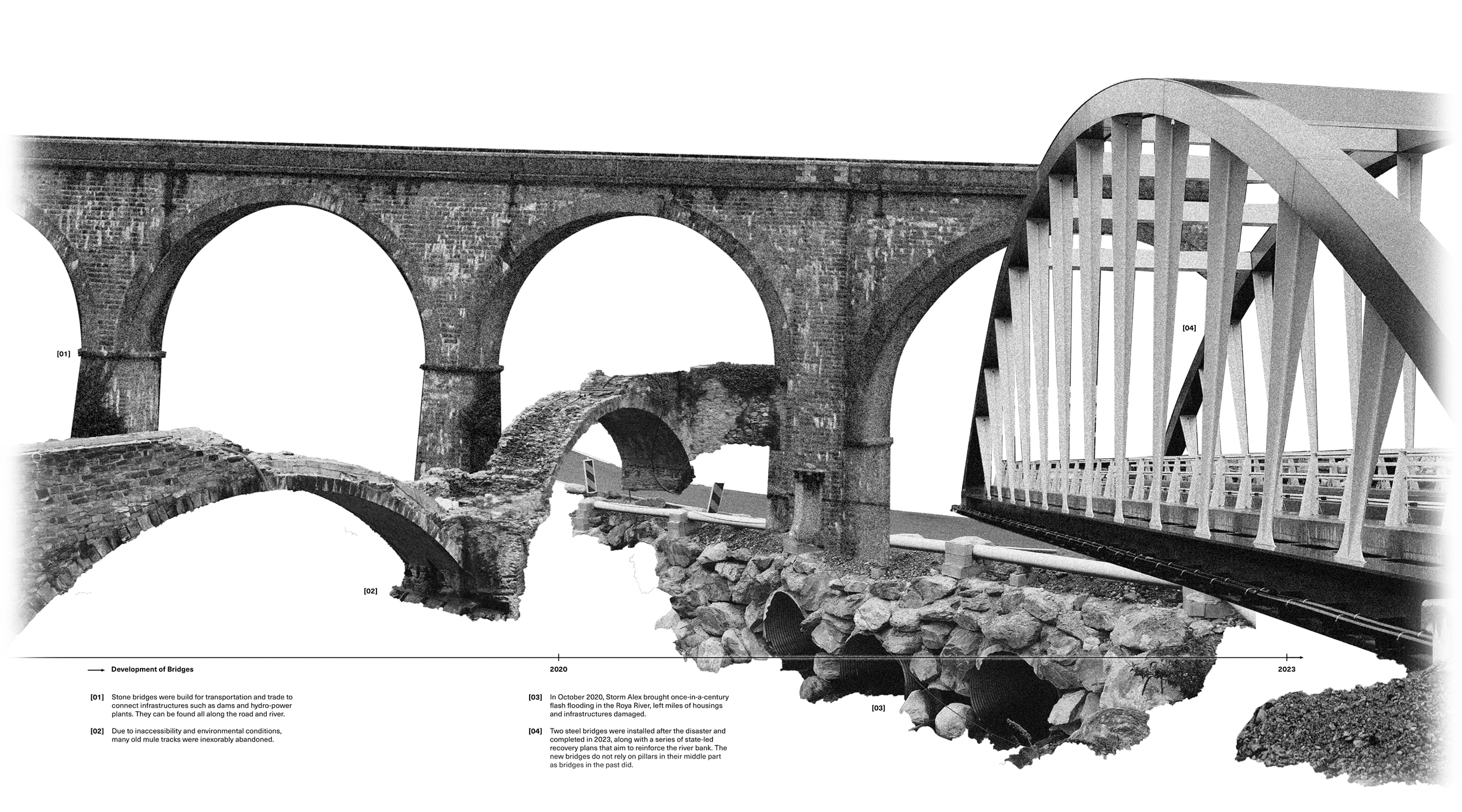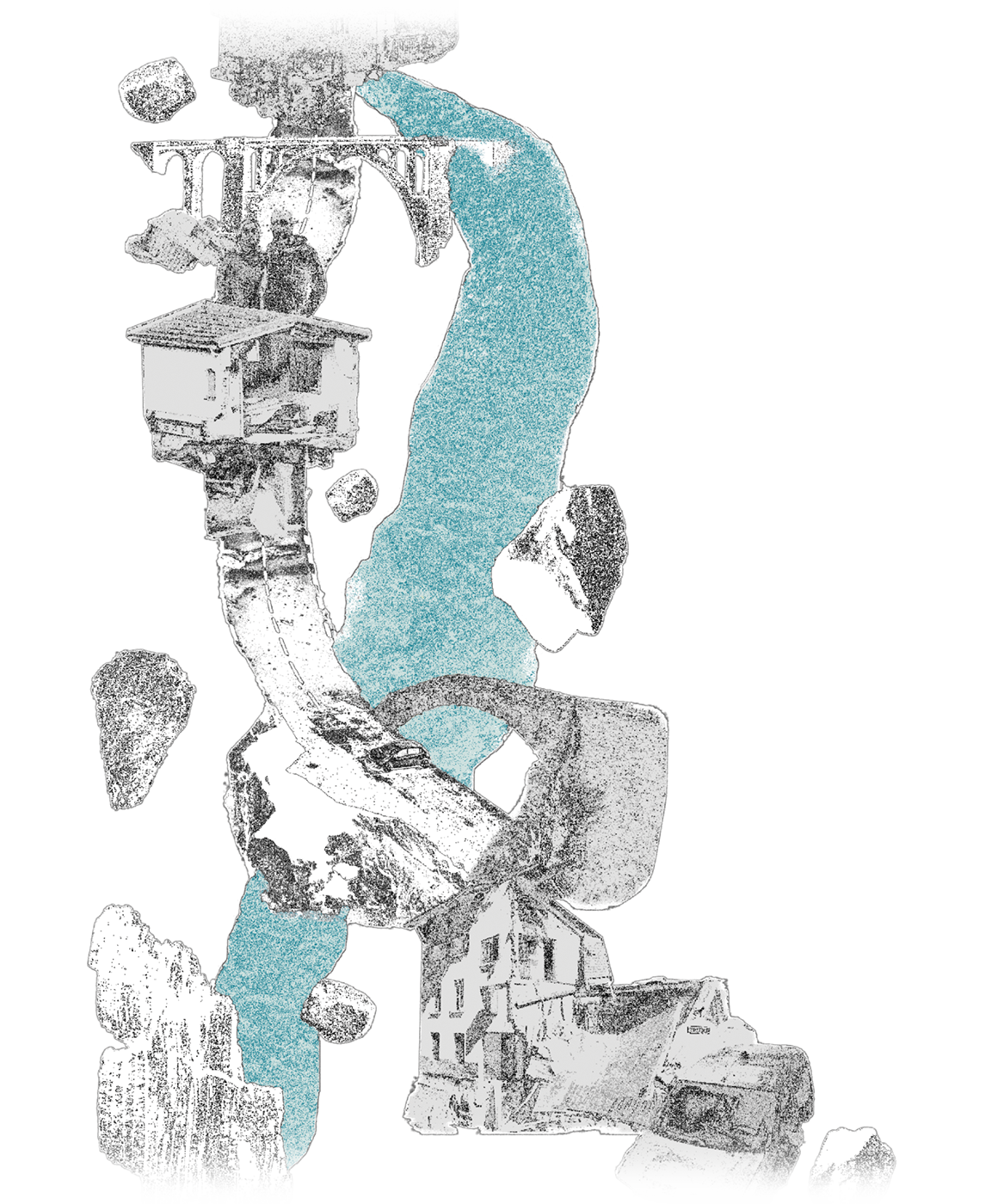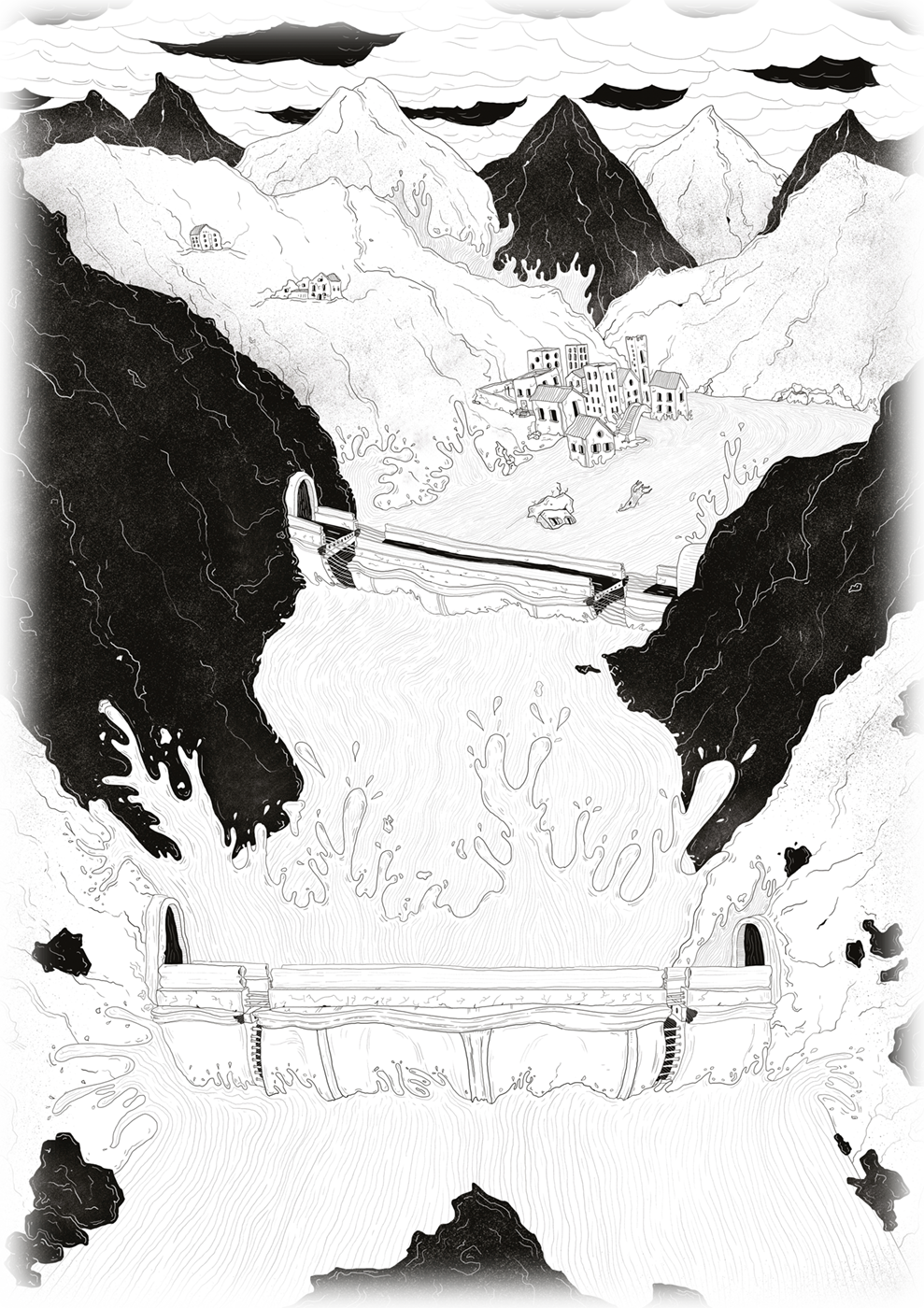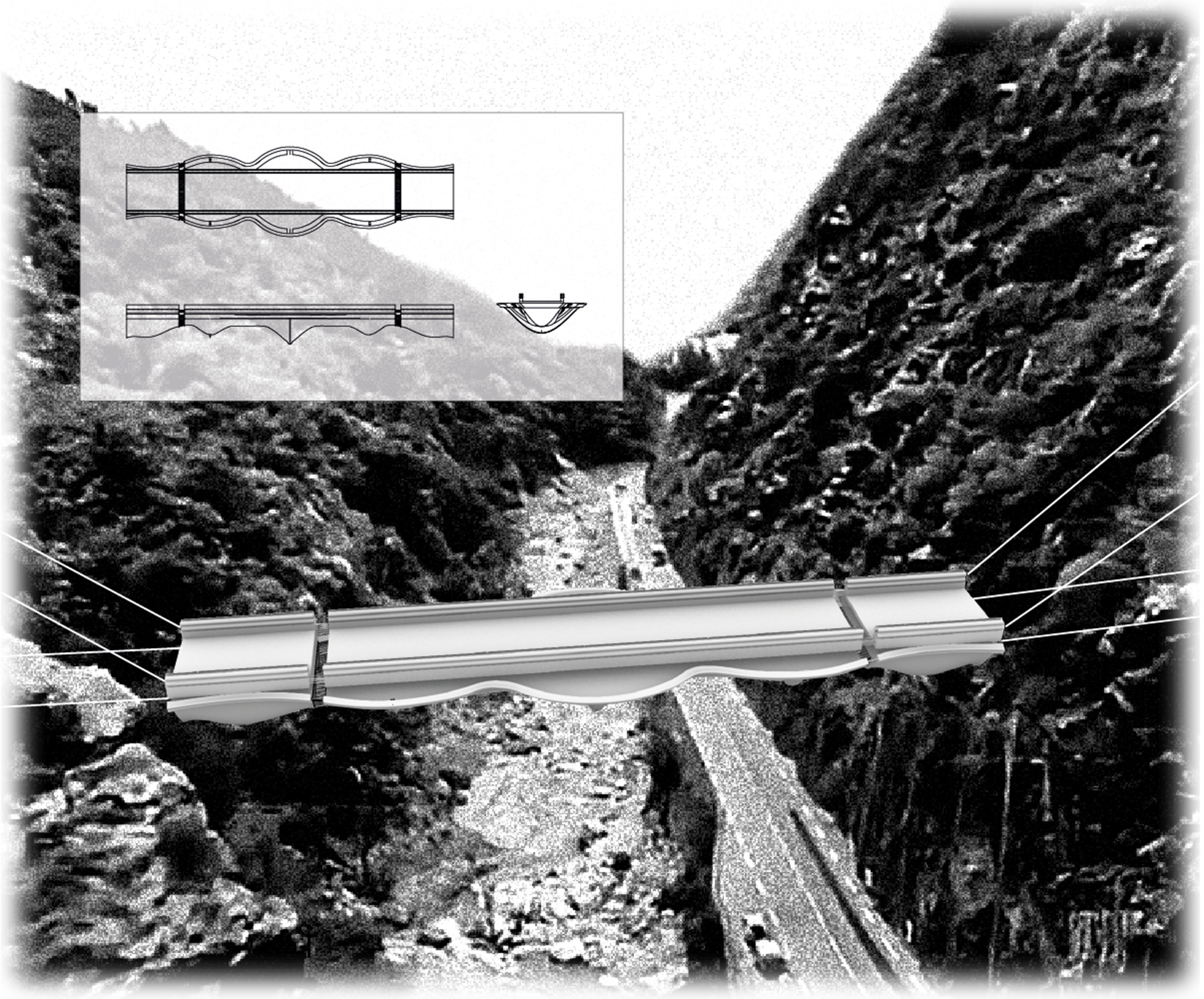Para-Bridge — Post-flooding infrastructures in Roya Valley
Giovanni Amerio, Miriam Daxl, Suzanne Craviari, Tang Ziqiau





In October 2020, an exceptional storm named Alex struck the southern French and northern Italian Maritime Alps, resulting in the kinds of flash floods and landslides that occur once a century. Its formation was partly influenced by the warming of the atmosphere and the Mediterranean Sea. The storm isolated villages and swept away historical buildings and infrastructure in the Roya valley, leaving dozens of families devastated. The catastrophic event served as a reminder that we have not been listening to the changes happening in our environment.
The v-shaped valley and the steep mountain slopes trapped heavy rainfall, causing the water level to rise rapidly and intensifying the river’s flow. Two and a half years later, despite the authorities’ implementation of recovery plans that prioritise the reconstruction of infrastructure, the valley still bears the marks of destruction. The debris of the stone bridge prompts us to reflect on these previously ordinary and unremarkable structures which represent the building blocks of modernity.

Modern spatial infrastructures create a false sense of safety and stability. Following Storm Alex, the local government made rebuilding infrastructure, bridges in particular, the top priority to “prevent further damage” – a stronger but similarly rigid approach to reconstruction.
In the face of climate change, how can we develop a flexible relationship with the land and embrace an ever- changing environment? How can we broaden our understanding of human displacement and reevaluate our attachment to a territory?


Drawing inspiration from the flow of water, what we propose is a floating bridge. This buoy-like device would be able to move with the force of the river during floods. In a post-flood scenario, this floating structure could continue to serve as a physical and social connection between both sides of the valley. Rather than being a conventional construction, such an object triggers a re-thinking of existing infrastructures and novel ways of living with an unruly nature – in this case, the one we find in the Roya valley
Sources
- Bayo Akomolafe, What Climate Collapse Asks of Us...
- Davide Faranda, Can We Connect the Exceptional Floods in France and Italy...
- Mediterranean episode causes “unprecedented” rainfall...
- Brett Milligan, Accelerated and Decelerated Landscapes...
- Storm Alex: Rebuilding Goes on One Year after Valley Floods near Nice...
- Stephanie Wakefield, Infrastructures of Liberal Life...